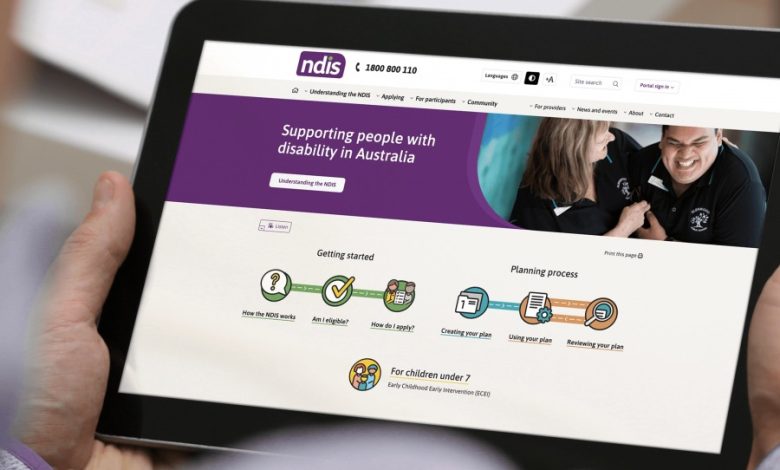10 Tips to Design the Homepage of an NDIS Website

Every website is unique. From the business type to contact modes, every element can be different from website to website. The same stands true with NDIS website designs.
NDIS refers to the National Disability Insurance Scheme (NDIS), which has revolutionised the way disability services are delivered in Australia. With a commitment to providing choice and control to people with disabilities, the NDIS has created a need for accessible and user-friendly websites.
For such important sites, the homepage must be designed with utmost care and caution. The pages should be welcoming for visitors and guide them to the information they need. It is indeed a tough task for non-professionals.
But worry not; we’ve got you covered.
1. Prioritise Accessibility
Accessibility should be at the forefront of your mind when designing an NDIS website design. It means complying with WCAG (Web Content Accessibility Guidelines) standards, which guarantee that people with disabilities can access and navigate your site effectively.
Example: Using clear and concise language, providing alt text for images, and making sure all elements are keyboard navigable.
2. Clear and User-Friendly Navigation
A well-structured navigation menu is essential for all, including NDIS website designs, to help visitors find the information they need. Start with organising your menu logically, with clear labels that reflect the content.
Further, you can use drop-down menus if necessary, but avoid overwhelming users with too many options. Keep the navigation menu visible on the top or side of the homepage for easy access.
3. Engaging Headline and Hero Image
The first thing visitors see when they land on your homepage is crucial. Create an engaging headline that clearly communicates the purpose of your website and the benefits of the NDIS. Accompany it with a high-quality hero image that resonates with your target audience.
For instance, a picture of diverse individuals with disabilities enjoying life can be both powerful and welcoming. So, make sure you spend enough time working on the headline and images of your NDIS website design.
4. Highlight the NDIS Mission
Make it clear that your website is dedicated to the NDIS mission of empowering people with disabilities. You can include a brief statement or tagline that encapsulates this mission. It can create an immediate connection with your audience and convey your commitment to the cause.
5. Call to Action (CTA)
Incorporate a prominent call to action on your homepage. Whether it’s “Learn More,” “Get Started,” or “Contact Us,” the CTA should guide visitors on their journey through your website. Professionals often use contrasting colours and compelling language to make the CTA stand out in an NDIS website design.
6. Testimonials and Success Stories
Sharing testimonials and success stories can build trust and credibility with your audience. So, consider featuring stories of individuals who have benefited from the NDIS on your homepage. You can also include images and quotes to make these stories relatable and inspiring for the audience.
7. Resource Links
The NDIS provides a wide range of resources for people with disabilities, their families, and service providers. Hence, it’s a great idea to include links to these resources on your homepage. This might include links to the NDIS website, relevant government documents, and support organisations.
8. Blog or News Section
Keep your audience informed by including a blog or news section on your homepage. Regularly update it with articles, news, and updates related to the NDIS. It not only provides valuable information but also helps with SEO and keeps your website fresh and engaging.
9. Contact Information
Make it painless for people to get in touch with you. Include a clear and accessible contact section with multiple ways to reach out, such as a contact form, phone number, and email address. Also, consider including a map if you have a physical location.
10. Mobile Responsiveness
With the increasing use of mobile devices, it’s crucial your NDIS website’s homepage is fully responsive. Ensure it looks and functions well on smartphones and tablets, as many users access websites on the go. Test your website on diverse devices and screen sizes to confirm a seamless user experience.
Final Thoughts
Designing the homepage of an NDIS website design requires careful consideration of accessibility, navigation, and content. By prioritising the discussed ten tips, you can create a welcoming and informative homepage that effectively communicates and helps visitors find the information they need.
Remember that the homepage is often the first point of contact for individuals with disabilities and their families, so it’s essential to make a positive and lasting impression. So, research and hire a well-experienced agency for website design in Melbourne.
Need further help finding the one? Try Make My Website.
It’s one of the most highly-rated digital agencies in Australia. They offer a wide range of services —SEO to web design— in various locations. So, whatever your requirement, you can trust them with it.
Good luck!








